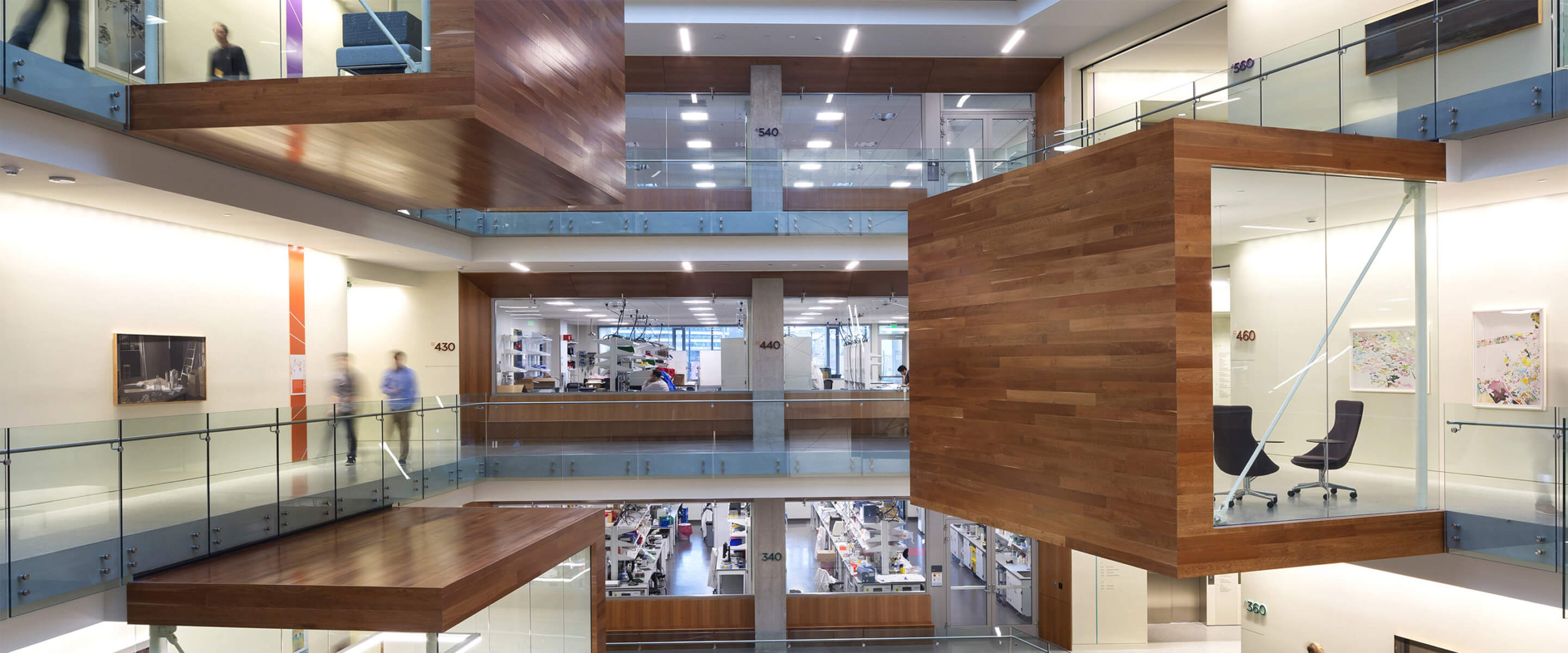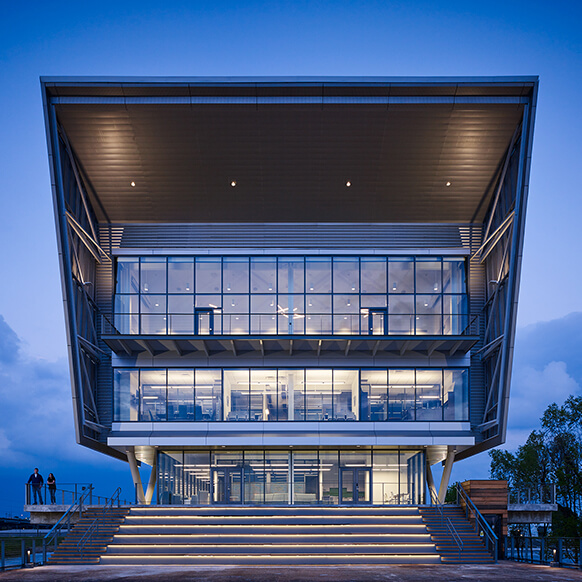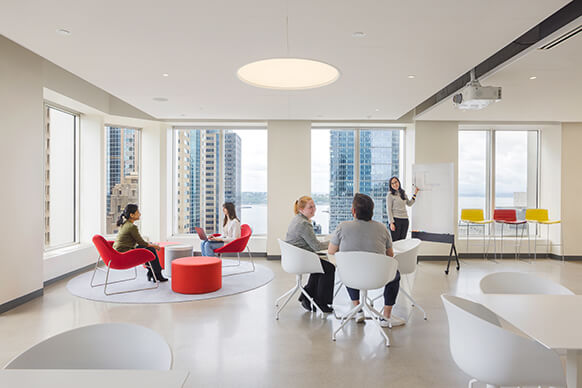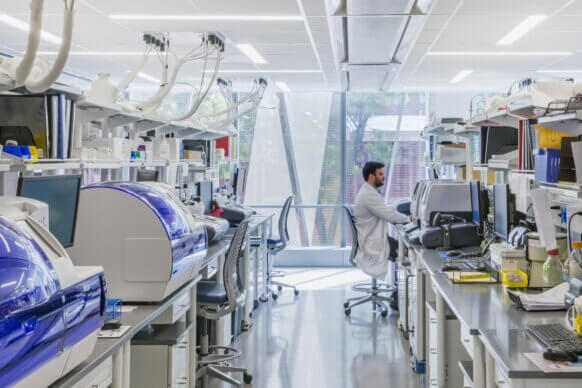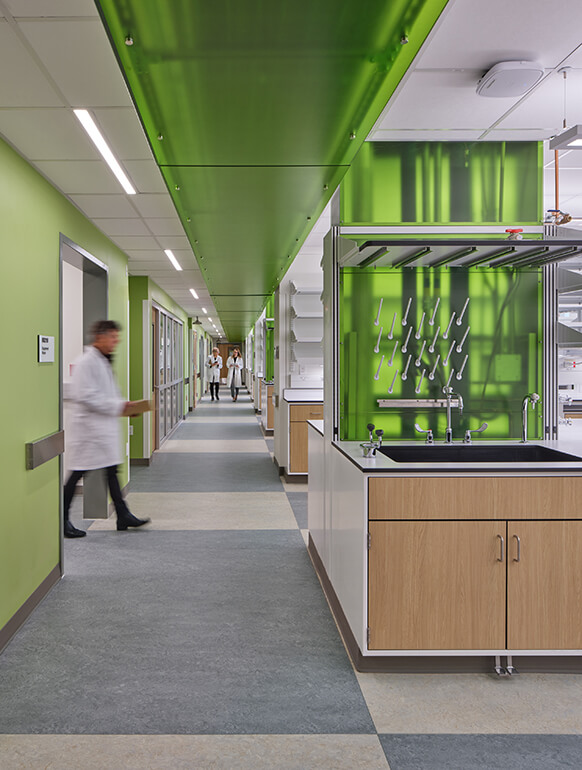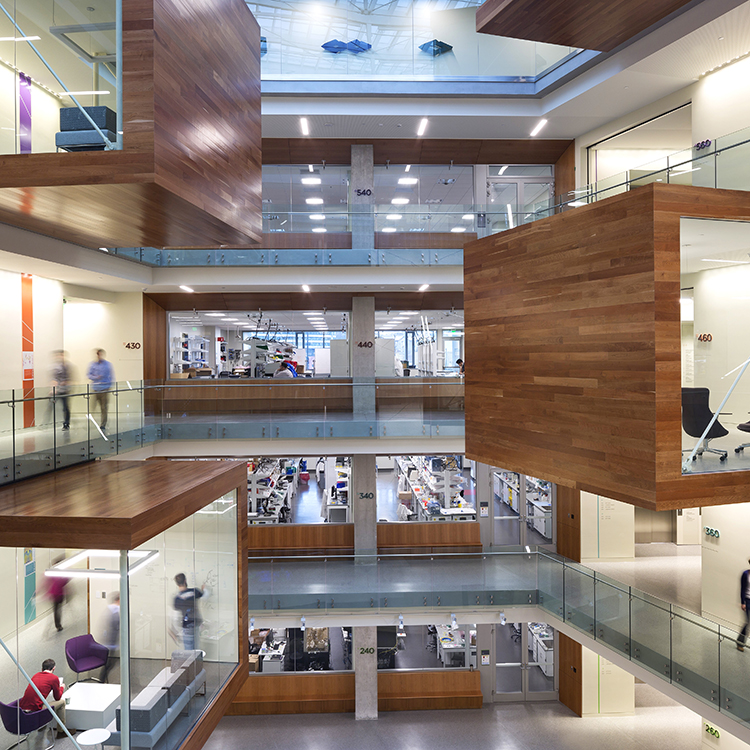
Allen Institute
Having spent many years scattered across numerous locations, The Allen Institute decided to build one new headquarters on a holistic site in the South Lake Union neighborhood of Seattle. Consolidation would finally allow this bioscience research company to leverage its trademark approach: one that combines big science, team science and open science.
Our team designed the new environment to encourage collaboration, offer flexibility, and break down barriers of private research practices. Conventional research buildings lack transparency and connection among users and the outside world. We broke these rules of conventional lab organization by arranging “petals” of functional space around a central atrium. This maximizes daylight and views while visually and spatially connecting the activities throughout the building.
By designing from the inside out, our team created a research headquarters that promotes collaborative interaction to facilitate rapid advancements in brain and cell research.
Rick Horwitz, Executive Director, Allen Institute for Cell Science
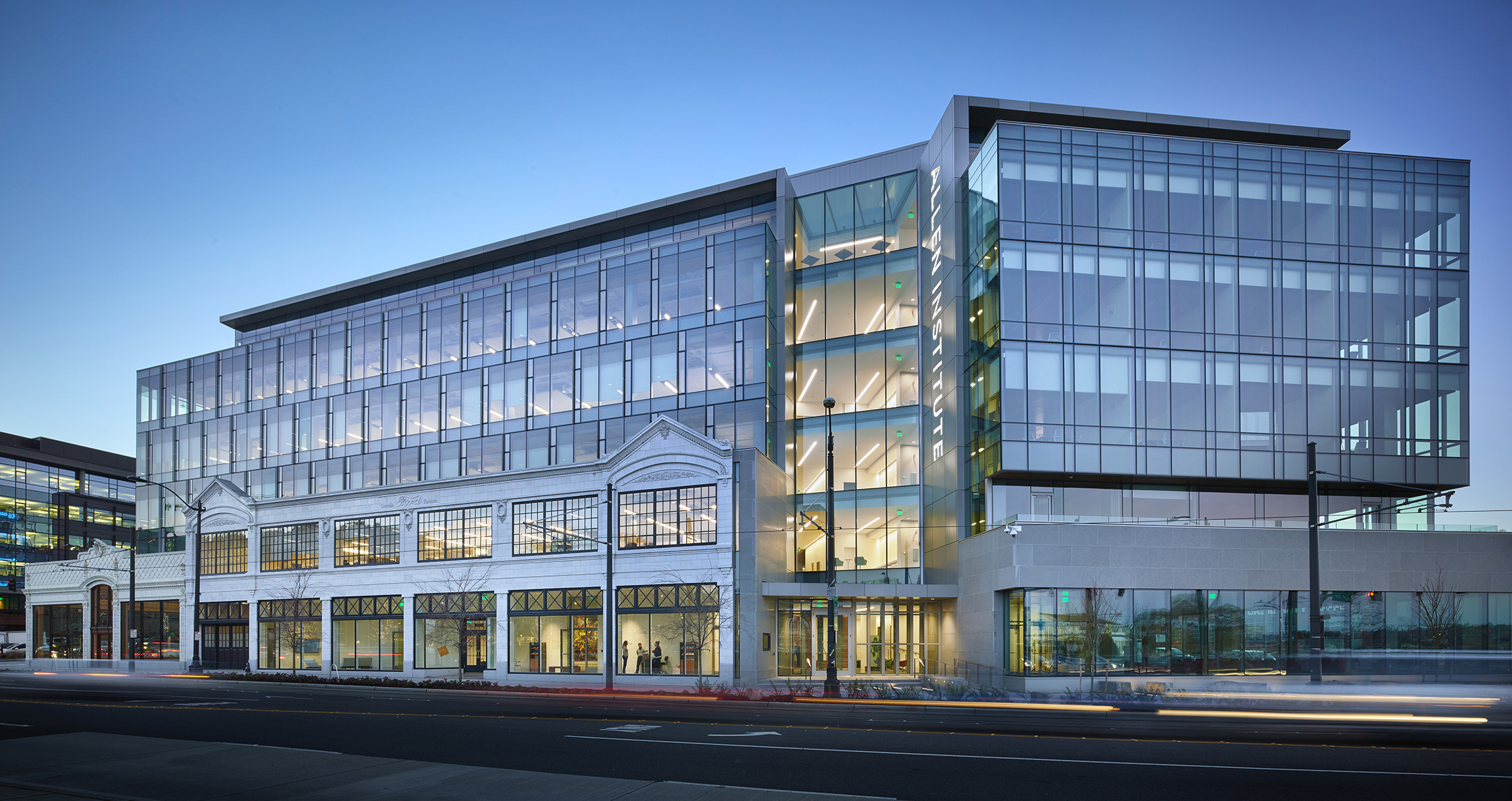
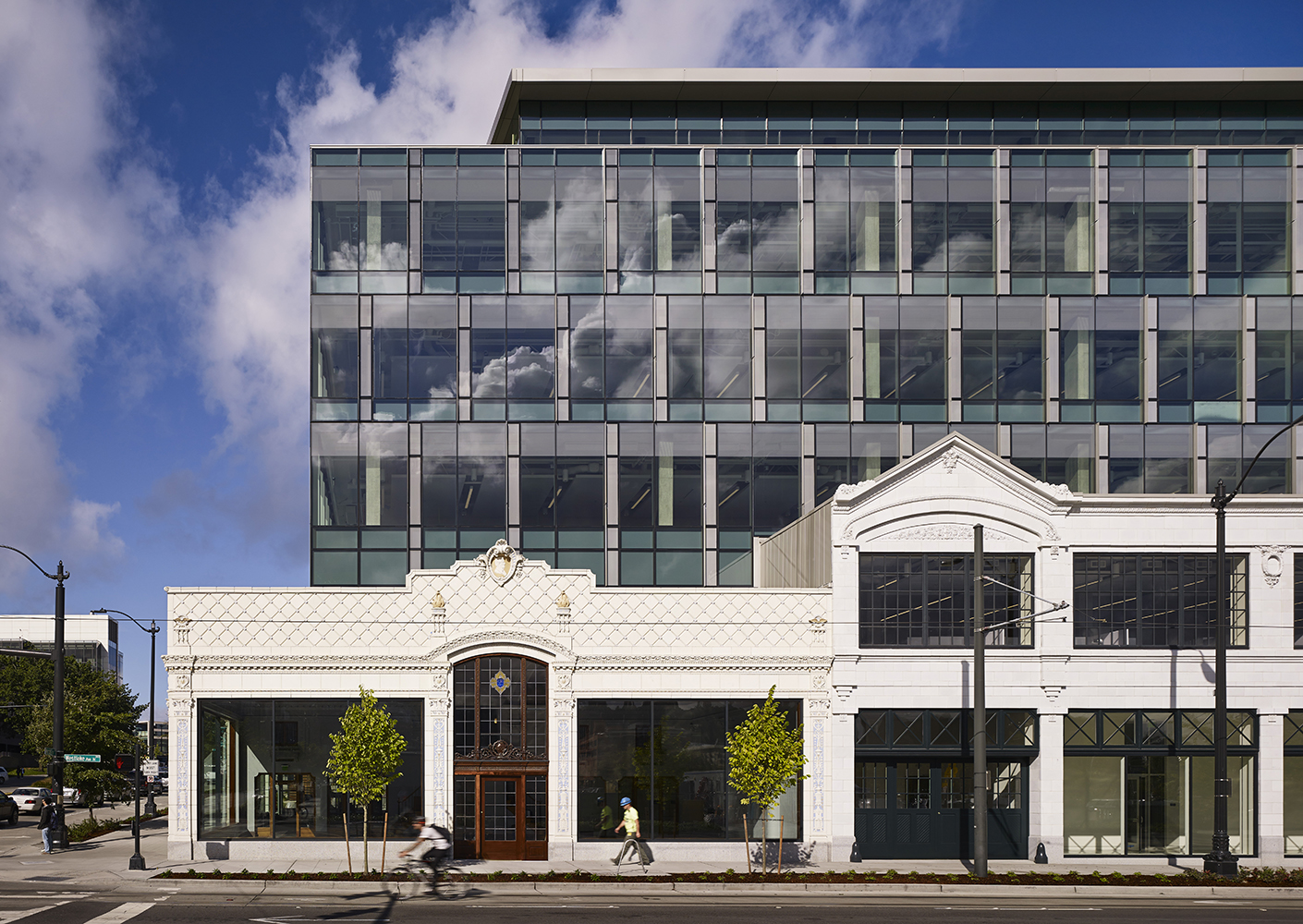
The site of the Institute was originally home to the 1920s Ford and Pacific McKay buildings. To preserve these former car showrooms, the historic buildings were cataloged, disassembled, and reconstructed along with the new structure. The restoration incorporated 2,760 pieces of terra cotta and 966 decorative plaster elements.
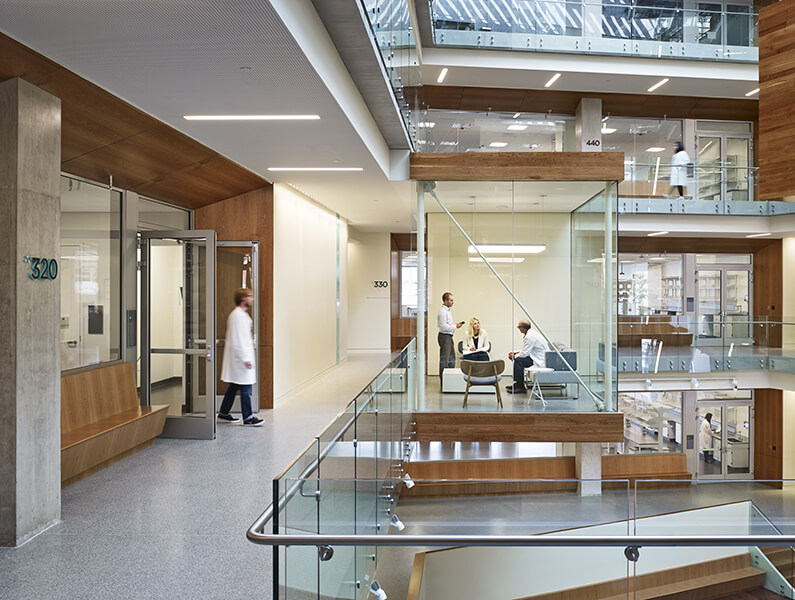
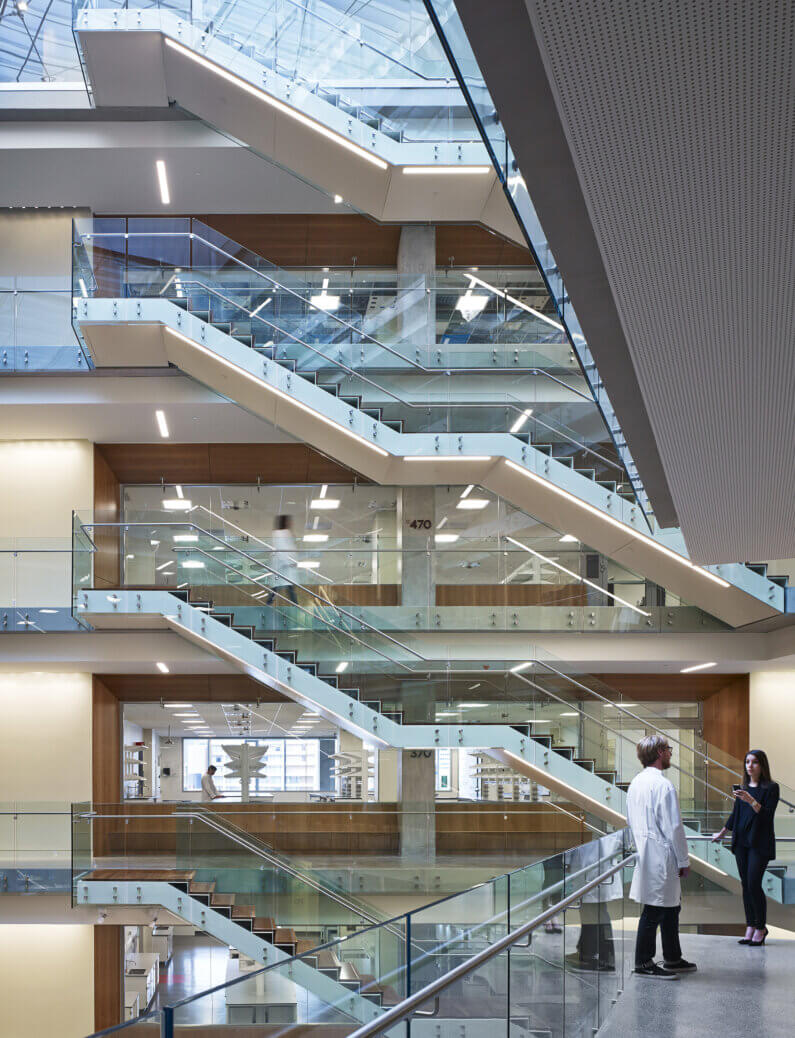
A six-story atrium with a stunning central stair acts as the catalyst for intentional collisions. Departments cross on the stairs and across the atrium, which spark conversations and ignite research collaborations. Cantilevered pods extend into the atrium and are used for spontaneous meetings which are often a source of creative sparks.
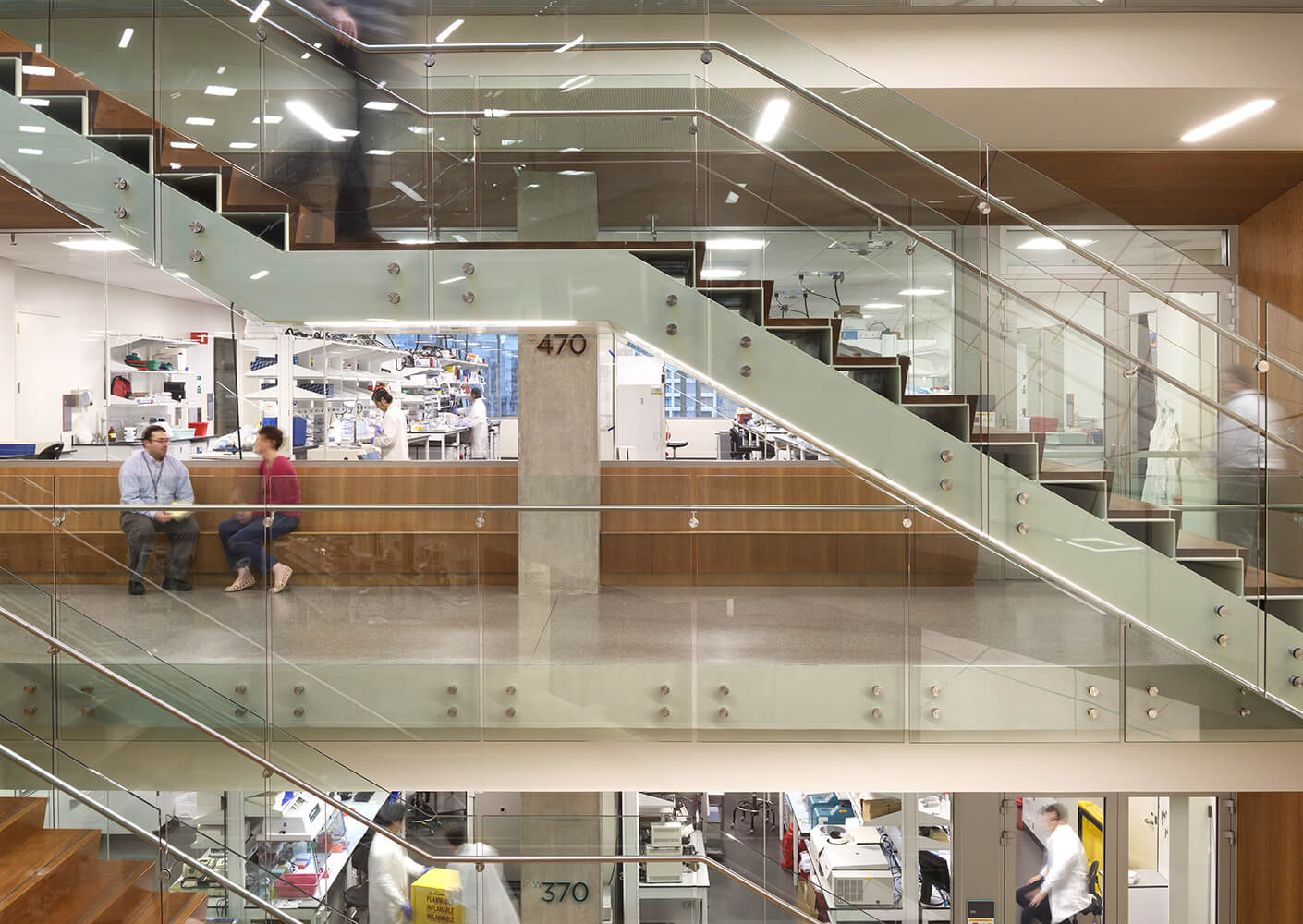
Conventional lab organization stratifies functional uses with linear zones of programs. Our design team organized the Allen Institute, however, with “petals” of functional spaces around an atrium. The labs are also strategically located away from the exterior allowing for circulation on both sides. Embodying the principle of “open science,” two sides of the lab are glazed which provides maximum light and allows researchers to see from one end of the building to the other.
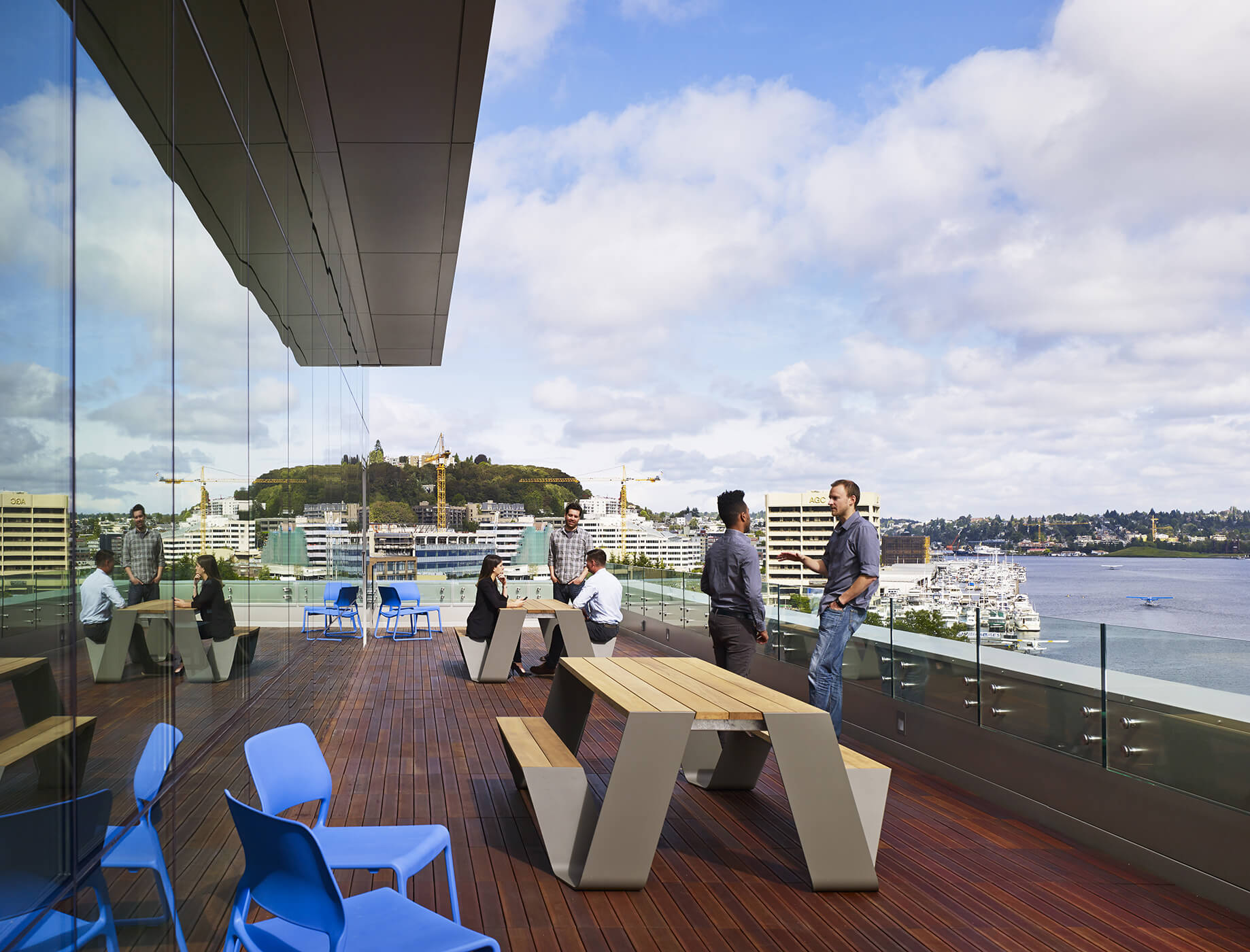
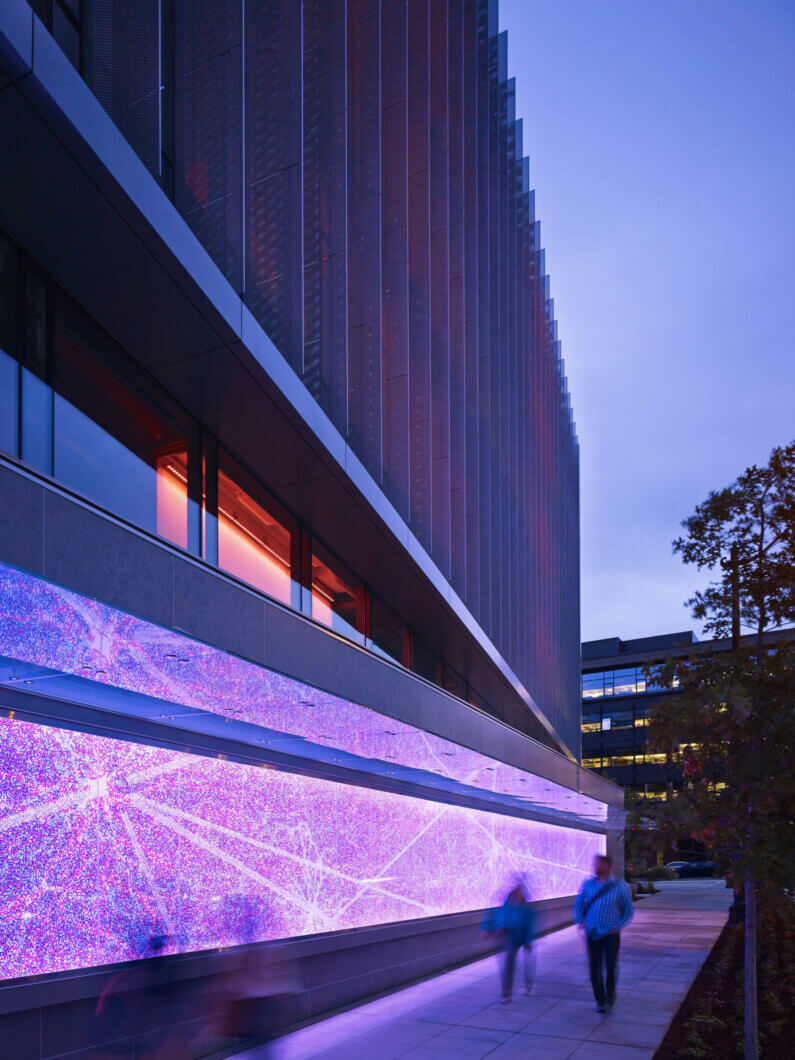
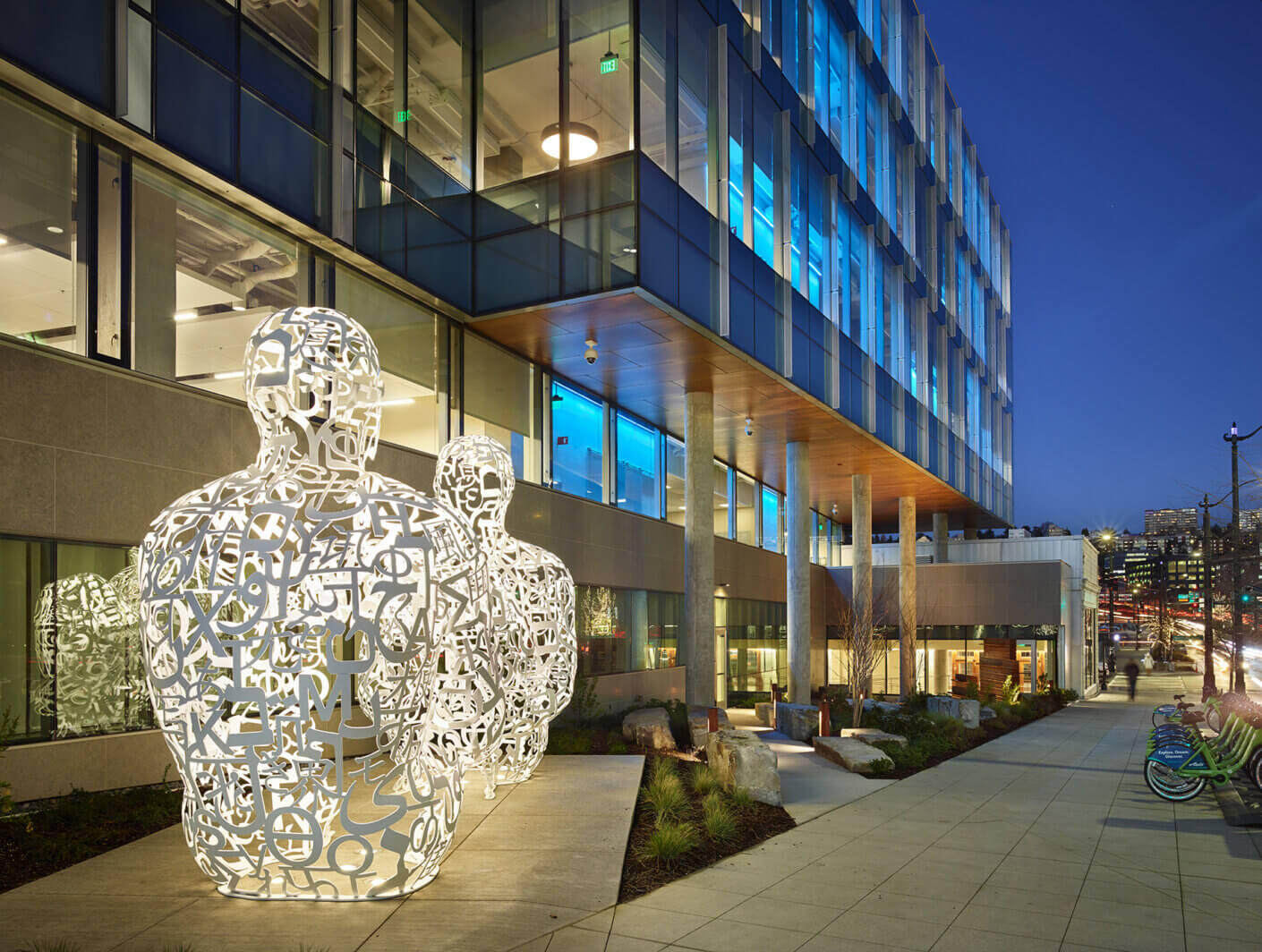
Dave Poston, Chief Financial Advisor, Allen Institute
